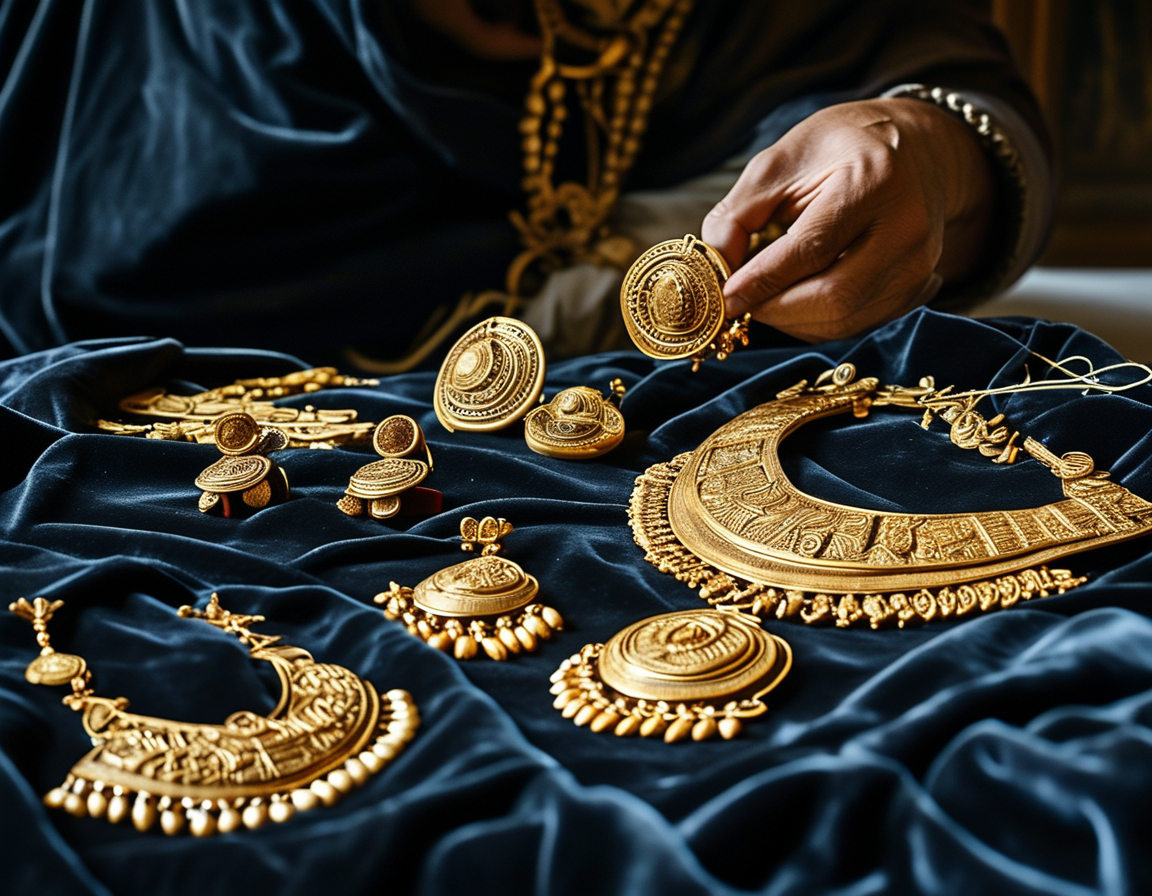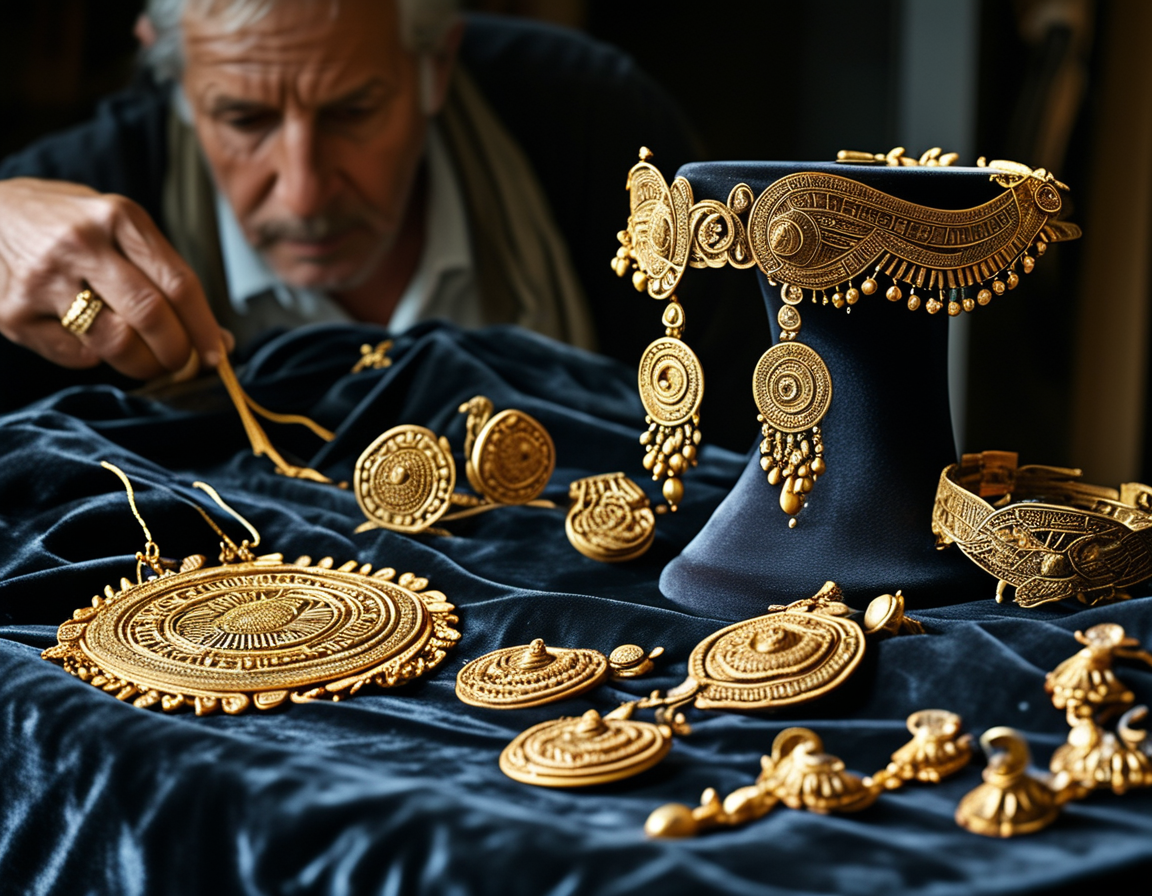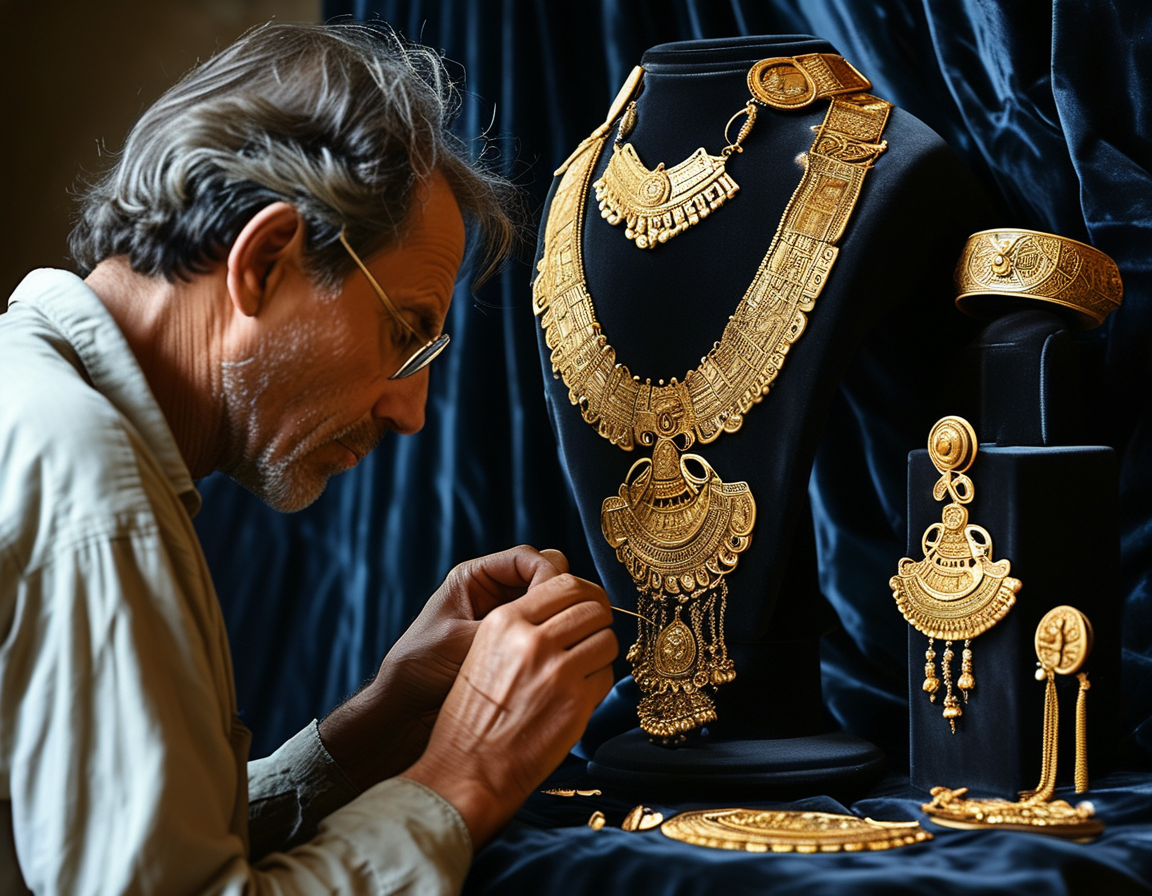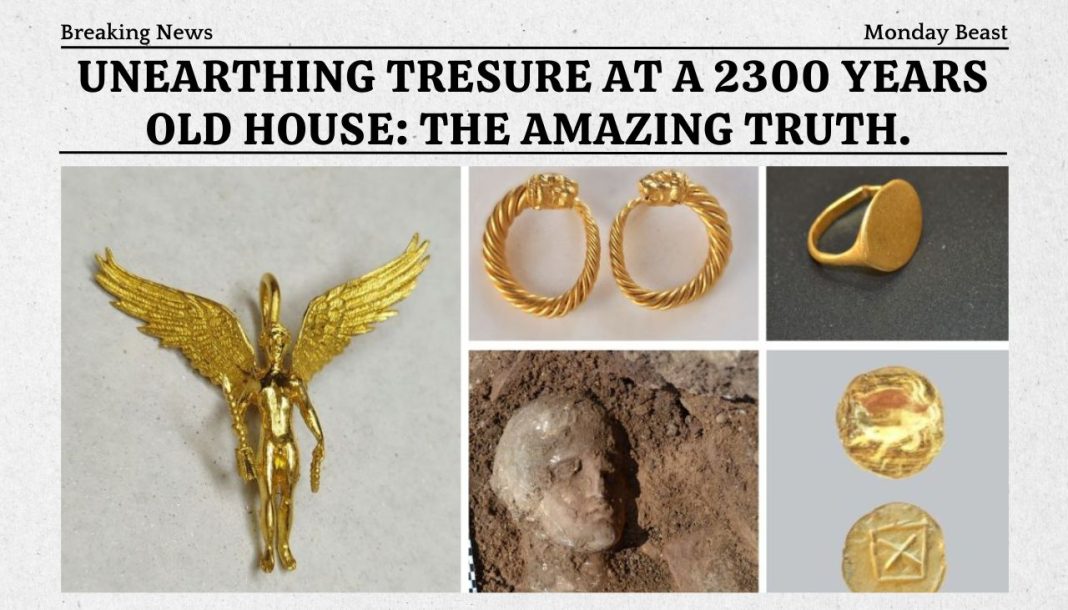A remarkable discovery in Greece has archaeologists buzzing. A treasure trove of exquisite gold jewelry was found in a heroon on the Trapeza plateau. This is an unusual experience in the world of archaeology that sparks excitement and curiosity.
But why bother with ancient ruins? For many, it’s not just about every artifact, it’s the stories they tell. The interconnectedness of ancient life showcases resiliency and culture. This feeling of connection is deeply human, making these discoveries profoundly significant.
An archaeologist examines intricate gold jewelry displayed on black velvet, displaying stunning earrings, rings and a delicate necklace with an intricate design, symbolizing Craftsmanship of ancient Greece.

So who do these valuable items belong to? A heroon was built specifically for legendary heroes, marking their heroic deeds or final resting place. Although the hero honored at this site remains a mystery, the significance of this discovery is enormous. Think back to your favorite myths—each one is rooted in storytelling, alive with emotional drama and epic struggles.
Excavations continue systematically near Aigio – a quiet town located on the Peloponnese peninsula in the west. However, beneath its surface lie countless historical items waiting to be discovered. The significance of this ancient site unfolds like a fascinating chapter of a fascinating book.
Imagine the bustle of past gatherings. These events included rituals, possibly sacrifices, and celebrations. Such practices breathed life into ancient communities, wrapping social elements around their beliefs. This leads us to consider: how do our contemporary gatherings compare? Are modern rituals still rooted in ancient practices?
A scenic view of the Trapeza plateau in Greece, with remnants of ancient ruins in the foreground, highlighting the historical significance and beauty of the archaeological site surrounded by lush greenery.

The building, believed to have been constructed over 2,300 years ago, holds architectural beauty. Its facade features semi-columns in the Corinthian style. This is an example of how ancient Greeks revered artistry, beauty, and functional design. Yet, the real treasures were hidden within.
Incredible gold jewelry was unearthed, including earrings, rings, and a stunning gold necklace. Each piece showcases the craftsmanship of the time, indicating the prosperity of those buried there. Just think of the stories these adornments could tell if they had the chance; the connections between their original owners and their society.
As researchers continue their work, they find more artifacts that add depth to our understanding of ancient Achaea. This region was known for its contributions to culture and economics in the Mediterranean world. Yet, as we dig deeper, we must remember: do we truly appreciate what we are uncovering?

Each artifact reveals something about human existence: the pursuit of beauty, the rituals of life, and the quest for afterlife significance. The find enables a glimpse into a world where every detail mattered, where art served a purpose beyond adornment.
What does this discovery mean for the future of archaeology? Clearly, it emphasizes the importance of continued research and excavation. It opens up new avenues to understand how the ancients lived, loved, and interacted. It reaffirms the belief that history isn’t just a collection of dates and events—it’s a living story.
As excavations are set to continue for the next five years, we can only anticipate what else may be revealed. Will more treasures be uncovered? Or perhaps, fascinating historical insights that redefine our understanding? The Trapeza plateau stands as a beacon of the past, urging us to listen.
So how can we carry this knowledge forward? By asking ourselves critical questions about our historical connection and shared humanity. Perhaps next time you come across an ancient artifact, consider the lives it touched, the hands that crafted it, and the stories almost lost to time.




